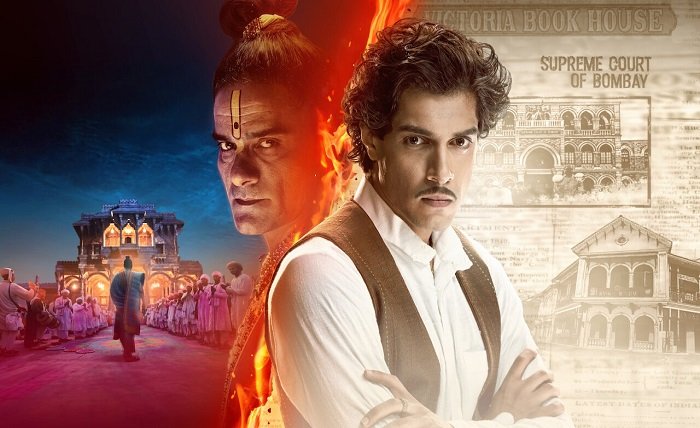The term “Maharaj” has long been associated with power, reverence, and leadership. Originating from Sanskrit, “Maha” means great, and “Raja” means king, collectively translating to “Great King” or “High King.” Historically, the title Maharaj was bestowed upon rulers, spiritual leaders, and individuals of high stature in South Asian cultures. Even today, the title carries a sense of respect and authority, often used to address spiritual gurus, royalty, or influential figures.
The Maharaj is not just a title; it represents a legacy of wisdom, governance, and spiritual guidance. Whether in the context of ancient kingdoms or modern spiritual movements, the Maharaj has always been a figure of immense significance.
The Historical Roots of the Maharaj
The history of the Maharaj dates back to ancient India, where it was used to denote kings and emperors who ruled vast territories. These rulers were often seen as divine or semi-divine beings, chosen by the gods to lead their people. The Maharaj was not only a political leader but also a protector of culture, religion, and tradition.
During the medieval period, the title evolved, and its usage expanded beyond royalty. Spiritual leaders and gurus began to be addressed as Maharaj, signifying their elevated status in society. This shift highlighted the growing importance of spirituality and the role of gurus in guiding communities.
Today, the historical legacy of the Maharaj continues to influence modern interpretations of the title, blending the past with the present.
The Maharaj in Indian Culture and Society
In Indian culture, the Maharaj holds a unique place. From royal palaces to ashrams, the title is synonymous with respect and admiration. In many regions, the Maharaj is seen as a custodian of traditions, ensuring that cultural practices are preserved and passed down through generations.
The Maharaj also plays a significant role in festivals and religious ceremonies. For instance, during Diwali or Navratri, the blessings of a Maharaj are often sought to bring prosperity and good fortune. This cultural reverence underscores the deep connection between the title and the values of Indian society.
Moreover, the Maharaj is often associated with philanthropy and community service. Many individuals bearing this title have dedicated their lives to uplifting the underprivileged, further cementing their place in the hearts of the people.
The Spiritual Significance of the Maharaj
In the realm of spirituality, the Maharaj is revered as a guide and mentor. Spiritual gurus who are addressed as Maharaj are believed to possess profound wisdom and a deep understanding of the universe. They are seen as bridges between the material and the spiritual worlds, helping their followers achieve enlightenment.
The teachings of a Maharaj often emphasize self-realization, compassion, and the pursuit of truth. Through discourses, meditation, and personal guidance, they inspire individuals to lead meaningful lives. The spiritual Maharaj is not just a teacher but also a beacon of hope and inspiration for countless devotees.
This spiritual dimension of the Maharaj highlights the title’s enduring relevance in a world increasingly seeking meaning and purpose.
The Maharaj in Modern Times
While the title Maharaj has its roots in ancient traditions, it continues to hold significance in contemporary society. Modern Maharajs can be found in various fields, from spirituality to social activism. They adapt age-old teachings to address current challenges, making their wisdom accessible to a global audience.
In the digital age, the influence of the Maharaj has expanded through online platforms. Spiritual gurus and thought leaders use social media to share their insights, reaching millions of followers worldwide. This modern adaptation ensures that the legacy of the Maharaj remains vibrant and relevant.
However, the modern Maharaj also faces challenges, such as maintaining authenticity in a fast-paced world. Despite these hurdles, the essence of the title continues to inspire and guide people across generations.
The Legacy of the Maharaj: A Timeless Influence
The legacy of the Maharaj is one of enduring impact. From ancient kings to modern spiritual leaders, the title has consistently symbolized greatness and wisdom. Its influence extends beyond borders, touching the lives of people from diverse backgrounds.
The teachings and values associated with the Maharaj have stood the test of time, offering guidance in both personal and collective contexts. Whether through historical narratives or contemporary practices, the Maharaj remains a source of inspiration and reverence.
This timeless legacy ensures that the title will continue to be cherished and celebrated for generations to come.
The Maharaj in Popular Culture
The Maharaj has also found a place in popular culture, appearing in literature, films, and art. From epic tales of royal Maharajs to portrayals of spiritual gurus, the title has been depicted in various forms, each highlighting its multifaceted nature.
In literature, the Maharaj often serves as a symbol of authority and wisdom. In cinema, characters bearing this title are portrayed with depth and complexity, reflecting their cultural and spiritual significance. These representations contribute to the enduring fascination with the Maharaj.
Through popular culture, the Maharaj continues to captivate audiences, bridging the gap between tradition and modernity.
Conclusion
The Maharaj is more than just a title; it is a symbol of greatness, wisdom, and spiritual guidance. From its historical roots to its modern-day relevance, the Maharaj has played a pivotal role in shaping cultures and inspiring individuals. Whether as a king, a guru, or a cultural icon, the Maharaj embodies values that transcend time and geography.
As we navigate the complexities of the modern world, the teachings and legacy of the Maharaj offer a beacon of hope and inspiration. By understanding and embracing this rich heritage, we can find meaning and purpose in our own lives.
FAQs
1. What does the title Maharaj mean?
The title Maharaj originates from Sanskrit, meaning “Great King” or “High King.” It is used to denote rulers, spiritual leaders, and individuals of high stature.
2. How is the Maharaj significant in Indian culture?
In Indian culture, the Maharaj is revered as a custodian of traditions, a spiritual guide, and a symbol of respect and authority.
3. Can women hold the title of Maharaj?
While traditionally a male title, modern interpretations have seen women spiritual leaders being addressed as Maharaj, reflecting evolving societal norms.
4. What is the role of a spiritual Maharaj?
A spiritual Maharaj serves as a guide and mentor, offering wisdom and teachings to help individuals achieve self-realization and enlightenment.
5. How has the Maharaj adapted to modern times?
In modern times, the Maharaj has embraced digital platforms to share teachings, making spiritual wisdom accessible to a global audience while addressing contemporary challenges.











